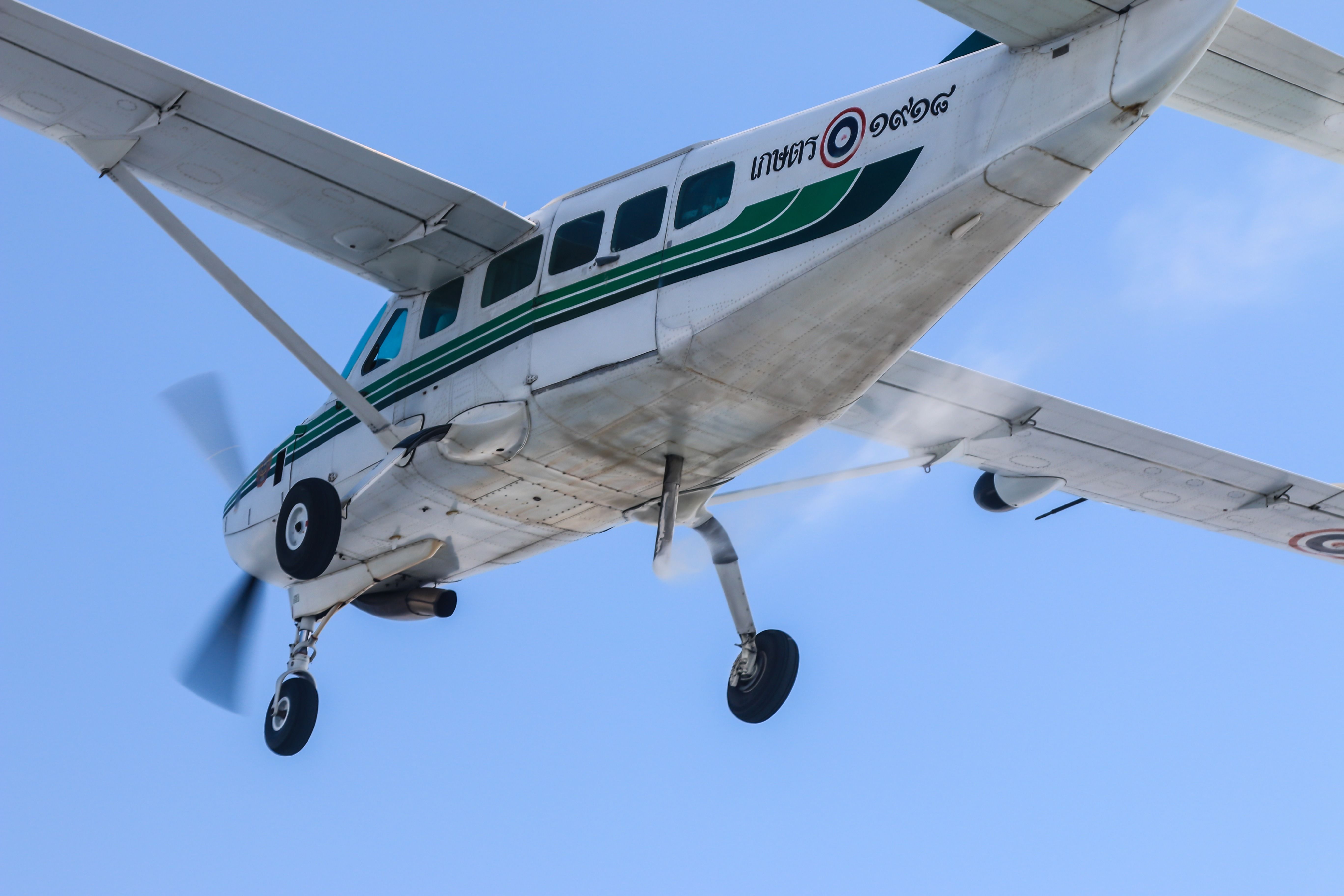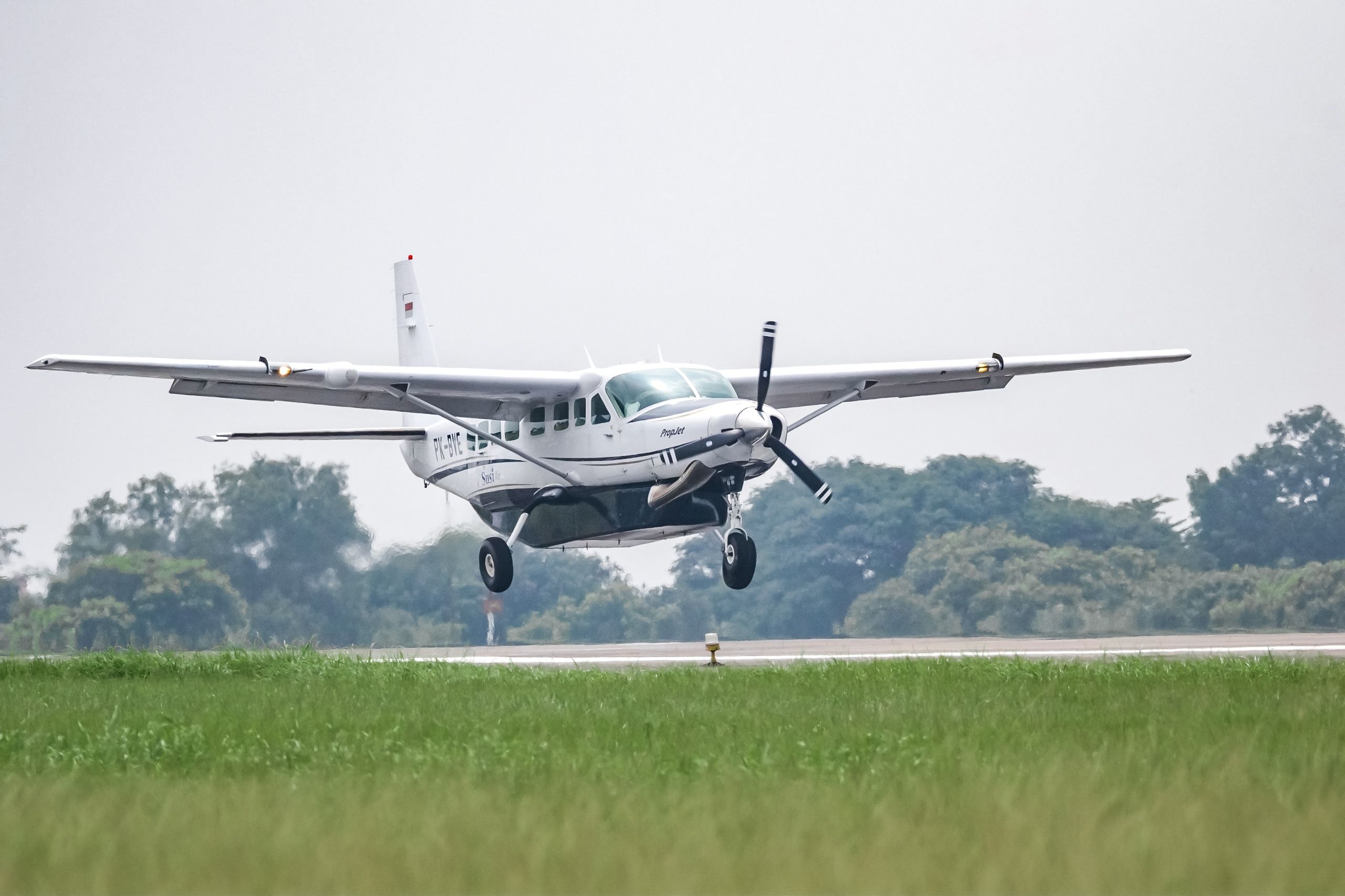Summary
- A Cessna Caravan overshoots the runway in Colombia. No injuries were reported to the officials conducting runway inspections.
- The versatile Cessna Caravan is used globally, and various variants, including passenger, cargo, and military options, are available.
- Cessna Caravan specs: 37-foot length, 186-knot max speed, 8,000-pound MTOW, widely used utility aircraft.
On Wednesday, July 31, a Cessna 208 Caravan reportedly overshot a runway while attempting to take off. The incident, as first reported by FL360aero, took place at the Cupica Airport (SKCP) in Cupica, Colombia. The outlet also reported that none of the passengers on the aircraft reported any injuries, and they were able to walk away from the plane crash.
Overrunning the runway

Related
A Brief Guide To The Different Variants Of The Cessna 208 Caravan
What are some of the many versions of the popular type?
According to FL360aero, officials of the Civil Aviation Authority of Colombia (Aerocivil) were conducting runway inspections at the Cupica Airport. This public airport is located near Cupica, on the western side of Colombia. The airport has only one runway, designated 07/25, which is 750 meters (2,461 feet) long. The team traveled via a Cessna Caravan to inspect the runway and determine if any improvements needed to be made to the runway or the nearby approach area.
On July 31, the Colombian Cessna Caravan attempted to take off from the lone runway at Cupica Airport. However, the car overran the runway and ended up in the nearby woods. No injuries were reported to any of the Aerocivil officials. However, the aircraft looks to have experienced quite a bit of damage to its wing and airframe.
The Cessna Caravan in question was allegedly registered as HK-3200, an aircraft registered with the Civil Aviation Authority of Colombia, per Flightradar24.
About the Cessna Caravan
The Caravan is a powerful utility aircraft used worldwide, including in remote areas like the forests of Colombia. Cessna first announced the turboprop project in the early 1980s. The first prototype conducted its maiden flight in December 1982. Eventually, the aircraft was certified by the Federal Aviation Administration (FAA) in October 1984. Deliveries of the aircraft began later that year, with the first aircraft going to the project’s launch customer, FedEx.
Photo: Ivan N Patmadiwiria | Shutterstock
Since the 1980s, several variants of the Caravan have been introduced. These include the Cargomaster, the FedEx version, and the stretched fuselage variant, the Grand Caravan. The Caravan is marketed as the ultimate utility vehicle, as it is used for a wide range of operations. There is a large market for using the aircraft as a passenger aircraft. Many operators use the Caravan as a “pond-hopper” and put the aircraft on floats to land at various lakes or bodies of water. The aircraft is also obviously used as a regional cargo aircraft due to its partnership with FedEx and FedEx Feeder. Several military variants have been developed as well, including transport aircraft, attack aircraft, aerial surveillance aircraft, and medical evacuation aircraft.
The Cessna Caravan has the following specifications:
|
Length |
37 feet seven inches |
|---|---|
|
Height |
14 feet eleven inches |
|
Wingspan |
52 feet one inch |
|
Maximum takeoff weight (MTOW) |
8,000 pounds |
|
Maximum payload |
3,070 pounds |
|
Maximum cruise speed |
186 knots (215 miles per hour) |
|
Maximum range |
1,070 nautical miles (1,231 miles) |
|
Service ceiling |
25,000 feet |

